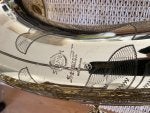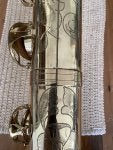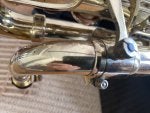Doug; thanks so much for your diligent and arduous work in pursuing the correct and original records on practically every Selmer Paris saxophone out there! I only have one Selmer story and it goes like this; in 1966 I was in the Army band in Indianapolis. They issued me a MK VI tenor but even though it was in fine shape, it was totally lifeless, so I was playing my 'Selmer Buescher 400' made shortly after the Selmer takeover of Buescher. One of the sergeants asked me if I wanted to buy a MK VI tenor and trade in the Buescher - he was going to swing the deal with the music store and we were going to drive to Elkhart, and acting as 'agents' for the store, pick the horn up. He was an alto player and wanted to try the new low-A alto. He even arranged for financing and everything. I was a bit inexperienced at the time but it was a good deal.
So we arrived and went directly to 'the room' - the room with one man in it and saxes laying around all over the place. This was the final stop before shipping them out. I believe it was here that the famous 'grading' took place which sometimes included neck swapping especially on the tenors. Can you imagine who had stood in that room before me? I was totally humbled but I still had to play some tenors and pick one out. I ended up with 130491 which seemed to be the best as far as tone and even response, including D2. The technician in the room told me 'You picked well-that one was going to New York'. I knew that had to be good but I did not know at the time about the 'A-B-C' grading system. The A's were reserved for Selmer Artists. The B's were sent to the premier outlets, like NYC, and the C's went to the other outlets. So I figured mine was at least a 'B'. People tend to make too much of this grading system - it was company policy so they had to do it, but it wasn't like there were good and 'bad' ones - if a horn was 'bad', it would not be shipped until fixed. The differences between them were small, so they would pick almost anything that would help them decide, like maybe a darker pearl or imperfections in the finish, for example. Plus, they did not need A's out of every batch because there were just a few Selmer Artists. I imagine there were plenty of 'A' horns marked as 'B'.
Well, Sgt. Manley did not care for the low A alto because of what he deemed to be sketchy intonation so only the tenor went back to Indy.








